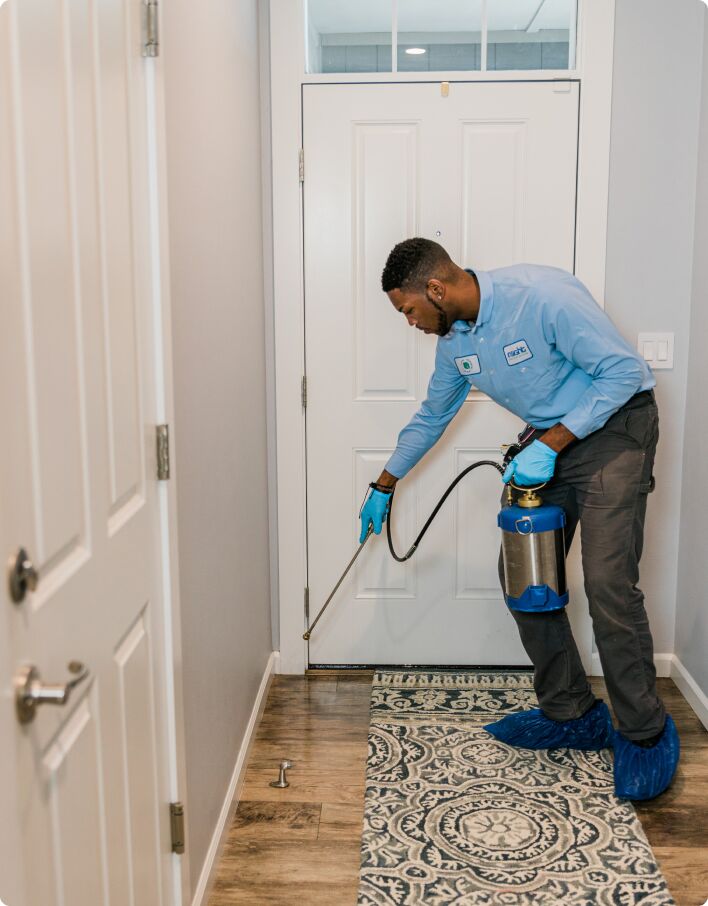Top-rated A1 Portland Bed Bug Exterminator - Quality You Can Trust Fund
Top-rated A1 Portland Bed Bug Exterminator - Quality You Can Trust Fund
Blog Article
Grasping the Art of Insect Control: Proven Strategies for Long-Term Avoidance and Eradication
By mastering the art of bug control through tested strategies for long-lasting avoidance and removal, one can establish an aggressive defense versus potential dangers. Understanding the habits of parasites, implementing integrated parasite management strategies, and using natural treatments are just a few key components essential to achieving long lasting success in this venture.
Recognizing Bug Actions
To successfully apply parasite control techniques, it is necessary to understand the intricate habits showed by numerous pests in various settings. By studying these habits, parasite control experts can determine the most susceptible factors in the bug's life cycle to target treatments much more effectively.
Understanding this, pest control specialists can concentrate on sealing entry points and getting rid of food attractants to prevent these bugs. By dealing with moisture concerns and securing crevices and splits, invasions can be considerably reduced.
Executing Integrated Pest Administration
Implementing Integrated Bug Administration involves using a holistic strategy to attend to parasite problems by incorporating different control tactics and methods. This method highlights avoidance, surveillance, and control of insects through a combination of organic, social, physical, and chemical treatments. By integrating several strategies, Integrated Pest Administration (IPM) intends to decrease the use of pesticides while properly taking care of pest populations.
Avoidance is likewise an essential concept of IPM, concentrating on removing variables that attract insects, such as sanctuary, water, and food. Routine tracking and assessment are crucial to spot insect invasions early and stop them from escalating.
Furthermore, IPM promotes the usage of eco pleasant and lasting parasite control methods to minimize harm to non-target organisms and the bordering ecological community - a1 residential pest control portland or bed bugs. By taking on an Integrated Parasite Administration technique, businesses and people can successfully handle bugs while lowering dependence on chemical pesticides
Using Natural Treatments
Building upon the structure of Integrated Bug Monitoring, a change towards using natural remedies provides a green method to pest control. Natural solutions harness the power of nature to prevent and get rid of pests without making use of rough chemicals that can hurt the environment, human beings, and beneficial microorganisms.

Furthermore, planting pest-repelling plants like marigolds, lavender, and mint around yards and homes can aid prevent pests naturally. These plants give off smells that bugs discover unpleasant, driving them away without the requirement for chemical intervention.
Keeping Cleanliness and Health

Executing a regular cleaning schedule and ensuring all members of the family or workers are educated on correct health methods can go a long method in bug avoidance. By maintaining sanitation and hygiene criteria, the environment comes to be less welcoming to bugs, inevitably supporting long-term bug control efforts.
Regular Inspections and Surveillance
Regular evaluations and keeping track of play an important function in proactively determining and attending to possible insect problems before they escalate. By performing routine inspections of both the exterior and interior of a building, insect control professionals can detect early indicators of problems, bug access factors, and conditions for bug activity. Monitoring involves the use of traps, lures, and various other devices to track insect activity degrees and types existing additional resources on the premises. This information is vital for figuring out one of the most efficient therapy techniques and assessing the success of insect control strategies with time.
Constant surveillance permits the very early discovery of insect troubles, enabling quick treatment to avoid prevalent infestations that can be difficult and pricey to eradicate. Additionally, regular examinations and checking assistance to adhere to regulative requirements and maintain a risk-free, pest-free environment for owners. Executing an aggressive technique via routine assessments and tracking is a keystone of reliable insect management, giving satisfaction and long-term defense against parasite risks.
Verdict
In final thought, understanding the art of pest control includes understanding pest habits, executing incorporated parasite administration, making use of natural solutions, preserving sanitation and hygiene, and performing regular evaluations and tracking. By adhering to these proven techniques for long-lasting avoidance and obliteration, individuals can successfully handle bug problems and develop a much healthier and more secure setting on their own and their environments.
To properly apply parasite control approaches, it is essential to comprehend the intricate actions showed by numerous insects in different environments (portland site here exterminators a1 for bed bugs). By researching these habits, insect control professionals can identify the most vulnerable factors in the bug's life cycle to target interventions more effectively
Applying Integrated Bug Management entails using a holistic approach to attend to bug problems by combining numerous control techniques and approaches. By preserving sanitation and hygiene requirements, the setting ends up being less friendly to pests, eventually sustaining long-term bug control initiatives.
By conducting routine inspections of both the interior pest control providers and outside of a building, insect control specialists can discover very early signs of invasions, pest access factors, and problems favorable to insect activity.
Report this page